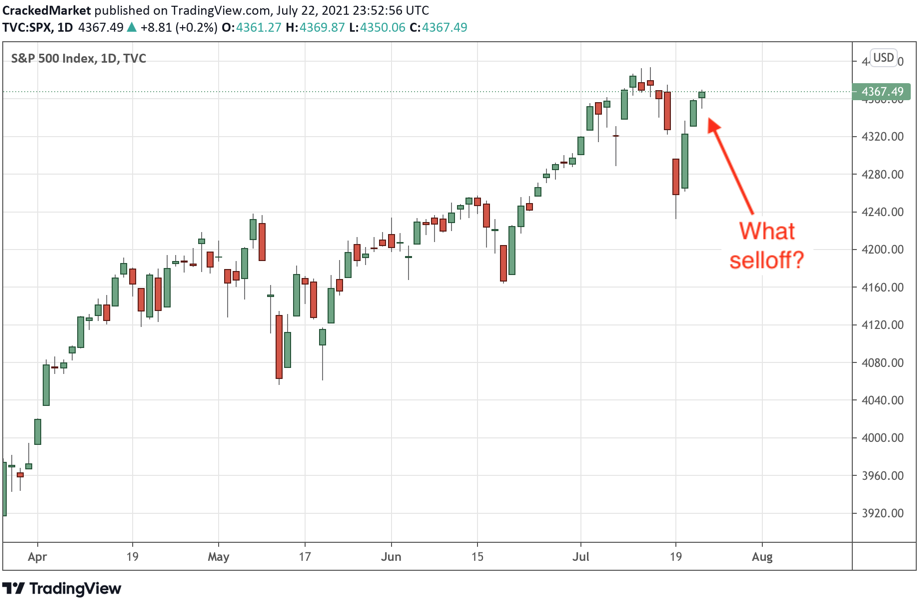Blink and you missed this week’s collapse and bounce-back in the S&P 500. While Monday’s tumble was the biggest one-day drop in three months, Tuesday’s rebound was equally impressive. And here we stand a few days later, right back where we started and wondering what the heck just happened?

But this pick-up volatility isn’t a surprise for readers of this blog. As I wrote over a week ago, we needed to approach this run to 4,400 with a healthy dose of skepticism and that proved to be valuable advice as the index shed nearly 150 points over the next three trading sessions:
Now to be clear, I’m not calling a top, simply pointing out the risk/reward is no longer skewed in our favor. In fact, following a 5% move over four short weeks, the risk/reward is most definitely skewed against us.
The first part of my comment, “I’m not calling a top”, is now the most relevant part for us going forward from here.
Three days later and Monday’s selloff is dead. Emotional selloffs need emotion to keep going and this one lost all of its momentum following this three-day bounce. Nervous owners are no longer nervous and that makes a world of difference when it comes to convincing people to make irrational trading decisions.
But just because owners are confident again doesn’t mean everything is back to the way it was last week. No, those with cash are still having second thoughts and reservations about chasing stocks near all-time highs.
Confident owners that don’t want to sell and gun-shy buyers afraid of these high prices is the perfect recipe for a prolonged sideways grind under 4,400 resistance. Something that will stretch out for the rest of the summer.
That said, while I don’t expect this market to go anywhere anytime soon, buying Tuesday’s bounce was still a great entry point. For anyone that got in early, they can move their stops up to their entry points, giving themselves a free trade. While the market might not go anywhere for a while, it is hard to beat the risk/reward of a free trade! (go up and we make money, go down and we get out at breakeven)
